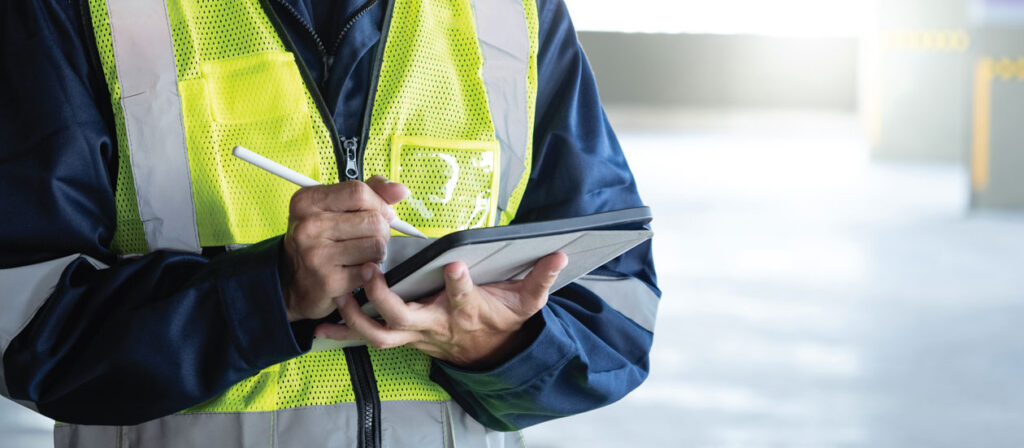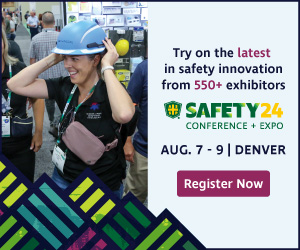Threshold Tips for Surviving a Federal OSHA Inspection
By: Travis Vance and Kevin Hess, Contributors
With maximum limits for OSHA penalties increasing every year—currently over $16,000 for serious/other than serious citations and more than $160,000 for repeat and willful—employers must be trained on their rights in the event federal OSHA[1] arrives at their facility.
When OSHA Arrives
OSHA can enter your worksite in two ways: either with a warrant, where a judge or magistrate determines the scope of an inspection; or with your consent, where you determine the scope and direction of the investigation. We nearly always recommend permitting a consent-based inspection. This option gives you control of the inspection, including when and where the OSHA inspector visits your facility.
During the opening conference (when OSHA first arrives to discuss the purpose of the inspection), you should be professional and courteous with the inspector, but also politely assert your rights—especially when discussing the scope of the inspection. This article provides the most important things employers can do in support of those rights, with an emphasis on four threshold tips to help prevent citations, minimize the penalties issued and narrow the scope of OSHA’s inspection.
The First Threshold Tip: Don’t Allow Supervisor Interviews on Inspection Day

Take the OSHA inspector straight to and straight from the area of the referral, complaint or even the pertinent area of an emphasis program inspection. (1st footage – stock.adobe.com)
Don’t permit any manager or supervisor interviews by OSHA on the day the agency arrives. Without a warrant or subpoena, the agency cannot compel you to do anything. By preventing same-day interviews, the inspection can proceed based solely on your narrowly tailored consent, and OSHA has to conduct its inspection within the parameters of that consent.
Why No Supervisor Interviews on the Day OSHA Arrives?
The actions—or words—of your supervisors can bind your company, and this pertains to any employee in a position to hire, fire, discipline or lead work. If the supervisor speaks, they speak on behalf of the company, and OSHA can use this information to form a citation.
Speaking to OSHA on the first day of an inspection can lead to careless errors; prevent time for adequate preparation; and much worse—could lead to a criminal referral in certain situations. Thus, on that first day, supervisors should be trained to be professional, while requesting that any substantive questions be asked during a formal interview with OSHA. This can be scheduled after you have time to prepare for and understand the facts surrounding the basis of the inspection.
If Not Right Away, When Will Supervisor Interviews Occur?
OSHA generally has six months to conduct an inspection from the time it opens the investigation. Although it certainly is not a good practice to make OSHA wait months for supervisor interviews, you should ensure you have taken all necessary steps, including fully preparing the witness and determining whether a supervisor needs their own counsel. This practice will significantly diminish the likelihood of receiving a citation and/or will decrease the number of citations issued.
The Second Threshold Tip: Watch What Documents You Provide on Inspection Day
Don’t give federal OSHA any documents other than your OSHA 300 logs, 300A summaries, 301 forms and relevant safety data sheets (SDS) on the first day of the inspection. Providing additional documents on the day of the inspection could lead to significant concerns you can otherwise easily avoid.
What Documents Must We Provide to OSHA on the Day of the Inspection?
Unless your industry is exempt from OSHA’s recordkeeping requirements, most employers with more than 10 employees must keep track of injuries and illnesses on an OSHA 300 log. Employers must also keep a summary of the injuries and illnesses that occur on an OSHA 300A form and keep more detailed information about each injury on a 301 form. These three documents—the OSHA 300 log, 300A and 301—must be provided to OSHA within four business hours of the agency’s request.
Relevant SDS (e.g., those concerning chemicals that relate to a complaint, referral or accident that forms the basis of the OSHA inspection) must be provided to federal OSHA within a reasonable amount of time, because they must be readily accessible to employees in the workplace. If you can’t find them or don’t provide them to OSHA on the day of the inspection, they are not readily accessible—thus, you can be cited for such failure. (NOTE: Even though these documents must be given to OSHA fairly quickly, you should still take the time to review carefully prior to giving them to an agency that can cite you for deficiencies.)
Aside from the documents noted above, there is generally no requirement for you to give federal OSHA any other documents within a certain period. Instead, you should simply request from OSHA an electronic list (to memorialize and confirm exactly what is requested) of documents outlining what they are seeking. Rushing to hand documents over to OSHA during the opening conference could lead to mistakes.
When Should You Produce the Other Documents?
Although it certainly is not a good practice to make OSHA wait months for requested documents, you should ensure you have taken all necessary steps before providing requested documents. This includes having counsel carefully review them, ensuring all responsive documents are provided; protecting proprietary, confidential and privileged information; objecting to requests outside the scope of the inspection; and properly bates labeling each document produced. This practice will significantly diminish the likelihood of receiving a citation and will likely decrease the number of citations issued.
The Third Threshold Tip: Escort Inspector Straight to and From the Inspection Area

To minimize the chances of OSHA adding additional citations or expanding the scope of the inspection, limit the number of potentially hazardous activities taking place at the site while an agency representative is present. (1st footage – stock.adobe.com)
Take the OSHA inspector straight to and straight from the area of the referral, complaint or even the pertinent area of an emphasis program inspection. OSHA inspections are subject to the “plain view” doctrine, which means that you can be cited for each violation an OSHA inspector observes while at your facility—and you never know what safety violations could be discovered in real-time during the walkaround portion of the inspection. Thus, supervisors should be trained to limit the area seen by taking the inspector directly to and from the area at issue in the inspection.
Where Can OSHA Go in Your Facility During an Inspection?
In nearly every state (California generally excluded), an OSHA inspector can only visit the portions of your facility that are pertinent to the complaint, referral and emphasis program on which the inspection is based. Keep OSHA to that scope.
Take them directly to the area of the facility relating to the basis of the inspection and nowhere else. This includes, when reasonable and appropriate, driving them to the back of your facility and entering through a remote entryway to view only pertinent areas.
Everything OSHA sees during an inspection is fair game. Whether it is your maintenance employee not wearing their safety glasses, or a damaged or unilluminated exit sign, OSHA can and will cite you for it. There is absolutely no reason to take the OSHA inspector on a field trip to non-pertinent areas of the facility. In addition to the risk of further citations, this decision will also lead to a loss of time and resources, as the inspection likely will take much longer than if narrowed.
The Fourth Threshold Tip: Hazardous Activity in Plain View During the Inspection
Supervisors should make sure employees refrain from any high-hazardous activities occurring while OSHA is present, including operating powered industrial trucks; working from heights or in trenches; operating cranes; or using hazardous chemicals. High-hazard activities will draw the attention of inspectors and could prolong or redirect the focus of the inspection, leading to additional citations.
Why Not Have Hazardous Work Activities Occurring During OSHA’s Visit?
OSHA inspections are 4th Amendment searches subject to the constitutional “plain view” doctrine. While walking through your workplace, any violation that an inspector sees may result in additional citations or expand the scope of the inspection to include portions of your safety program not within the original focus of the investigation.
You are not attempting to hide anything from the inspector. However, controlling hazards in your workplace in real-time—those occurring while you are walking around the site with the OSHA inspector—is nearly impossible. To minimize the chances of OSHA adding additional citations or expanding the scope of the inspection, limit the number of potentially hazardous activities taking place at the site while an agency representative is present.
About the Authors:
Travis Vance is Partner and Co-Chair of Fisher Phillips’ Workplace Safety and Catastrophe Management Practice Group and Regional Managing Partner of the firm’s Charlotte, N.C., office; Kevin Hess is Partner in Fisher Phillips’ Workplace Safety and Catastrophe Management Practice Group based in the firm’s Columbus, Ohio, office.
[1] It’s important to note that state OSHA programs have different inspection procedures and requirements. You should consult with counsel if you are facing an OSHA inspection in a state plan state, like California, Iowa, Michigan or North Carolina. This article addresses only inspections in federal OSHA states, like Ohio, Georgia, Pennsylvania, Texas, Florida and many others.
Share on Socials!
FAQs: How Can Dust from Manufacturing Packaging Materials Harm Workers
Improving Workplace Safety with Wearable Technology
What Is Respirator Fit Testing (and Why It’s Important for Your Workers)
Leaders in Industrial Hygiene
Council for Accreditation in Occupational Hearing Conservation (CAOHC)
Subscribe!
Sign up to receive our industry publications for FREE!











